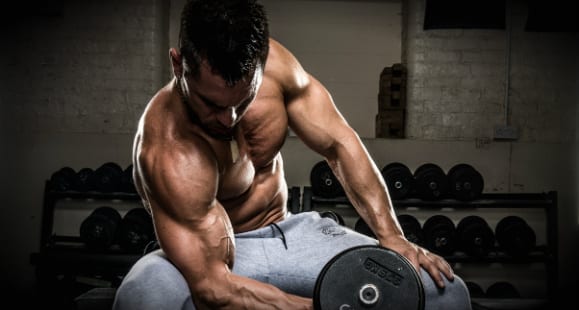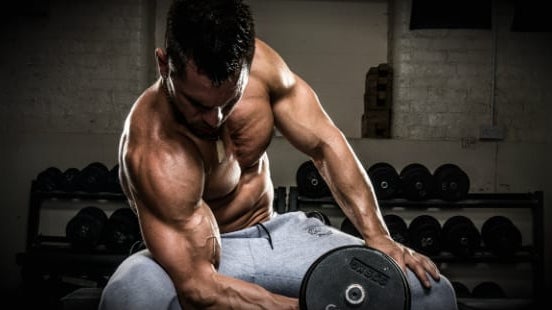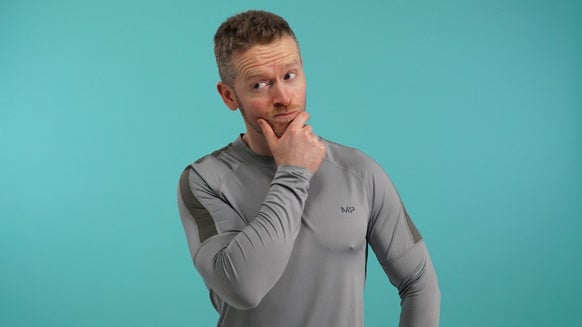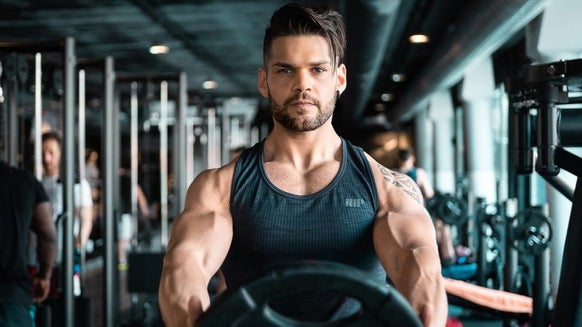Dumbbell Concentration Curls | Technique & Common Mistakes

By Myprotein Writer
Jamie Wykes Hobday
If we quickly divert into the anatomy of the bicep, the bicep is a muscle otherwise known as ‘The Bicep Brachii’ and is comprised of two parts; the long head and the short head. The primary movements of the biceps are to be able to flex and supinate the arm.
Situated at the upper arm between the shoulder and the elbow, the biceps are one of the most inescapable muscles on the body; meaning it will always be on show!
When training biceps, like any muscle, it is vital to know how to train them and more importantly; what specific training styles and methods will achieve specific goals. Whilst training the biceps, the short and long head must both be targeted, placing enough stimulus on each head to force growth in strength and size. Whilst both heads of the bicep are simultaneously joint at the humerus, they are both extremely different muscles and are stimulated in contrasting ways.
Biceps Anatomy
Biceps | The Short Head
The short head of the bicep is on the medial side of the arm and can produce movements specific to itself which the long head cannot replicate. It can replicate itself as a fixator to stabilise the shoulder joint and it also does not extend as far back as the long head does.
When viewed from the front, it is the short head that is going to visually create the thickness of the bicep. Due to the fact that this part of the bicep is most commonly people’s ‘lagging part’, it would be worth considering starting your workout with an exercise that targets the short head of the bicep.
Here the priority principal is being applied and the majority of the energy is being utilised for the part which you struggle with the most; makes sense, right?
The short head is optimally trained when the arms are in front of the body, including exercises such as preacher curls, cable preacher curls and spider curls; as you can tell by this foregone mentioned list, there is a huge variety of ways to target the short head of the bicep.
Biceps | The Long Head
With regards to the long head, it is situated on the lateral side of the bicep and is what is going to turn heads in the gym.
Otherwise recognised as the outer head of the bicep muscle, this is the section of the bicep which includes the highly regarded ‘bicep peak’!
So whilst evenly balancing both heads of the bicep during your workouts is key its just as important to not neglect the long head!
Exercises that will accordingly stimulate the long head of the biceps include; barbell curls, incline supinated dumbbell curls and cable curls. An exercise that is specifically useful for targeting the long head of the bicep is the dumbbell concentration curl.
How To Perform Concentration Curls
Concentration curls are one of the most thought of bicep movements;

Due to its positioning (the arm stabilised against the thigh), it is an excellent isolator of the bicep, and moreover, the long head of it. However, with this particular exercise, the game is within the name; there should genuinely be a degree of ‘concentration' when performing this exercise in order to truly maximise its full potential.
What’s more, it is common that you will see very similar bicep movements (barbell curls, hammer curl, bi lateral dumbbell curl are very similar) in the gym that essentially will all be targeting the same area, however, the concentration curl is unique in the sense that no movement is similar to it.
How-To Steps
1) Sit down on a flat bench with legs positioned shoulder width apart, knees bent and feet flat on the floor. At this stage of the exercise, the dumbbell should be placed on the floor, between your legs.
2) With whatever arm you choose to perform first, firmly grip the dumbbell whilst keeping the previously mentioned body position. With the arm that isn’t being used or the ‘resting arm’, place it on the inner thigh of the leg. For example, if you are training the right bicep, the left arm will be resting and placed on the inner thigh of the left leg.
3) As you exhale your breath, elevate the dumbbell in a curling movement until it has reached a point of full contraction. Realistically, the dumbbell should reach to about shoulder height.
4) Once this point is reached, pause for a brief second, squeeze and place considerate tension on the bicep. Remember, 'concentrate’ on that mind to muscle connection.
5) As you finish this contraction, breathe in and slowly release the dumbbell down back to the starting position. The rest of your body should be staying in the same -position throughout without any momentum being used. No swinging!
6) Once the required number of repetitions have been performed with one arm, repeat on the resting arm with the same applied technique and form throughout.
Common Mistakes
? Limited Range of Motion
Due to poor technique and/or too much weight, there can often be a limited range of motion with the concentration curl. This will result in less stimulus being placed on the muscle and therefore less likelihood of activation and growth.
With the concentration curl; aim to perform the whole range of motion for the concentric phase of the rep (upwards curling phase) and stop just short of a full range of motion on the eccentric phase (downwards phase). Stopping at this point will prevent strain and stress on the joints and potentially prevent injury.
? Not applying variety methods
Fortunately, biceps can imply a whole host of overload training methods which can help in a variety of ways; to bust plateaus, crank up the intensity for time spared sessions or to simply mix up your training!
Next time you are training biceps or more relevantly the concentration curl, try out some of the following methods; drop-sets, supersets, 21’s, eccentric reps, cheat reps. There are a whole host, don’t ever let training become boring!
? Forgetting The Mind Muscle Connection
This is often, the missing recipe in peoples training regime. Everything is on point; diet, hydration, training split, supplementation…But is the brain working also? Essentially, whilst this deserves a separate discussion for itself; the mind muscle connection is where you are thinking about the muscles squeezing and contracting, as oppose to the amount of weight being lifted.
The best way to think about this is this; your muscles do not know how much weight is on the bar, they only know how much tension they are under and thus how much they are contracting. So next time you are performing the concentration curl, focus on the squeeze.
Take Home Message
Whilst the biceps do deserve isolation movements purely dedicated to themselves, it must be noted that they are heavily involved throughout any pulling movements such as lat pulldown and barbell rows.
Furthermore, due to the fact that the biceps are a much smaller muscle group in comparison to the back, legs or chest; they can recover quicker, meaning you can train them frequently.
Take the previously mentioned facts, find out what works for you and watch them biceps grow!







